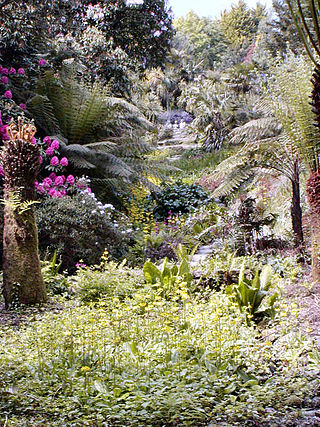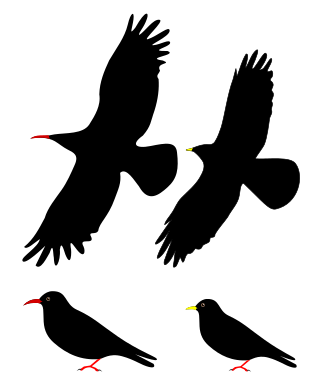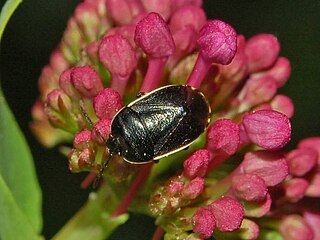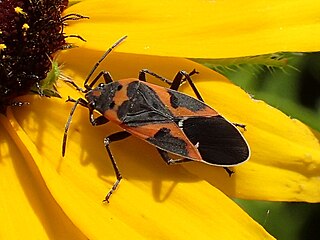Dozmary Pool is a small lake, in the civil parish of Altarnun on Bodmin Moor, Cornwall, UK. It is situated 16.9 kilometres (10.5 mi) from the sea and lies about 15 kilometres (9.3 mi) north-east of Bodmin and 2 kilometres (1.2 mi) south of Bolventor. It originated in the post-glacial period. The outflow from the pool is into Colliford Lake and is therefore one of the sources of the River Fowey. In the past the name has been spelt as Dozmaré and as Dosmery Pool. The pool and surrounding area was designated a Site of Special Scientific Interest in 1951 for its biological interest and is within the Cornwall Area of Outstanding Natural Beauty.

Whitesand Bay is a wide sandy bay near Land's End in west Cornwall, England, United Kingdom. It stretches for one mile between the headlands of Pedn-mên-du and Aire Point. and contains the village of Sennen Cove. It is also a landing point for the Atlantic Crossing 1 international telecommunications cable.

The Ochteridae comprise a small family of insects. Eight genera with about 80 species have been described. They occur worldwide along the shore of various types of water and the greatest diversity is in tropical regions. They are "true bugs", being members of the order Hemiptera, and are in the suborder Heteroptera. Ochteridae commonly are known as the velvety shore bugs. They resemble the Saldidae shore bugs and have lengths ranging from 4.5 to 9 mm (0.18–0.35 in).

The hawthorn shield bug is a common European shield bug. Its chief food is haws, the fruit of the hawthorn tree, but adults can overwinter on a diet of leaves, and individuals can be found on many potential food plants, including pedunculate oak, sessile oak and whitebeam. They may grow up to 17 mm (0.67 in) long, and are camouflaged in shades of green and brown. Like many so-called "stink bugs", they may release unpleasant odours when disturbed.

Troilus luridus, also known as the bronze shieldbug, is a species of shield bug found in Europe. It was first described by the Danish zoologist Johan Christian Fabricius in 1775. Shieldbugs are generally phytophagous and some, including Troilus luridus, are also carnivorous and will eat the larvae of beetles, lepidoptera and sawflies.

Picromerus bidens, the spiny shieldbug or spiked shieldbug, is a carnivorous species of shield bug in the family Pentatomidae.

Dolycoris baccarum, the sloe bug or hairy shieldbug, is a species of shield bug in the family Pentatomidae.

Cornwall is the county that forms the tip of the southwestern peninsula of England; this area has a mild and warm climate regulated by the Gulf Stream. The mild climate allows rich plant cover, such as palm trees in the far south and west of the county and in the Isles of Scilly, due to sub-tropical conditions in the summer.

The birds of Cornwall are in general a selection of those found in the whole of the British Isles, though Cornwall's position at the extreme south-west of Great Britain results in many occasional migrants. The nightingale is one English bird which is virtually absent from Cornwall.

Stenotus binotatus is a species of plant bug, originally from Europe, but now also established across North America and New Zealand. It is 6–7 mm (0.24–0.28 in) long, yellowish, with darker markings on the pronotum and forewings. It feeds on various grasses, and can be a pest of crops such as wheat.

Canthophorus dubius is a species of burrowing bug belonging to the family Cydnidae, subfamily Sehirinae.

Stagonomus venustissimus, common name woundwort shieldbug, is a species of shieldbug belonging to the family Pentatomidae, subfamily Pentatominae.

The Loe, also known as Loe Pool, is the largest natural freshwater lake in Cornwall, United Kingdom. The earliest recorded appearance of this simple name form was in 1337, when it was called "La Loo", but is mentioned as 'the lake' in 1302; Situated between Porthleven and Gunwalloe and downstream of Helston, it is separated from Mount's Bay by the shingle bank of Loe Bar. Both the Loe and Loe Bar are situated within the Penrose Estate, which is administered by the National Trust, and are designated as a Site of Special Scientific Interest by Natural England. It is within the Cornwall Area of Outstanding Natural Beauty and is considered a classic Geological Conservation Review Site. The South West Coast Path, which follows the coast of south-west England from Somerset to Dorset passes over Loe Bar.
Ditrichum cornubicum, commonly known as the Cornish path-moss, is a moss endemic to Cornwall, United Kingdom. First discovered in 1963, on a roadside west of Lanner, Cornwall by Jean Paton, it has since been found in two other places within Cornwall. It was published as new to science in 1976.

Piezodorus lituratus, the gorse shield bug, is a species of Pentatomidae, a family of shield bugs.

Heterogaster urticae, common name nettle ground bug, is a species of true bug in the family Heterogastridae.

Lygaeus kalmii, known as the small milkweed bug or common milkweed bug, is a species of seed bug in the family Lygaeidae. It is found in Central and North America.

Proxys punctulatus, the black stink bug, is a species of stink bug in the family Pentatomidae. It is found in the Caribbean Sea, Central America, and North America.

Aepophilus is a monotypic genus of bugs, containing the species Aepophilus bonnairei in the monotypic subfamily Aepophilinae in the monotypic family Aepophilidae of the infraorder Leptopodomorpha. It is found on the Atlantic coast of Europe.

















